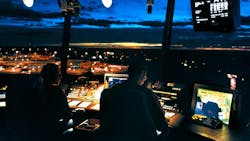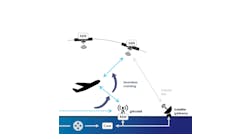FAA Says Industry's Expected Growth Shows Value Of NextGen Project
March 10--A report by the Federal Aviation Administration predicts the aviation industry will continue expanding over the next two decades, underscoring the value of the NextGen air traffic control project to the nation.
The William J. Hughes Technical Center in Egg Harbor Township is the nation's primary NextGen facility, but the NextGen Aviation Research and Technology Park -- which was meant to jumpstart business in the area -- currently is stalled.
"As our aviation system advances into the next century of flight, the solution for handling the demand for service is the Next Generation Air Transportation System, or NextGen," wrote FAA Acting Administrator Michael P. Huerta in the introduction to the 2012-2032 FAA Aerospace Forecast.
The federal NextGen project is expected to replace the current land-based air control system with a satellite-based one. The $11 billion project is expected to help reduce noise and fuel costs, while allowing airports to handle more planes and therefore more passengers.
Ronald Esposito, executive director for Egg Harbor Township's Next Generation Aviation Research & Technology Park, said the air industry's growth showed the need for the center.
"It supports the need for NextGen," he said.
The park has languished since it was first announced in October 2005 with the promise of 2,000 high-paying jobs adjacent to the Hughes center. No buildings have been built, and a watchdog report in The Press of Atlantic City last month showed contractors were still owed hundreds of thousands of dollars.
The FAA expects the domestic air travel market to shrink by less than one percent in 2012, but to grow between 2 percent and 3 percent a year over the following 20 years, the forecast said. In all, it expects the 731 million passengers in 2011 to grow to 1.2 billion passengers by 2032.
The report said that it anticipated the industry transforming from the boom-bust cycle of recent years into one of sustainable profits. Over the past 10 years, the industry went from a 6 percent drop in 2001 to an almost 12 percent increase just three years later.
"The FAA sees a competitive and profitable industry continuing to grow over the long term despite the fact that we are operating in a climate of economic uncertainty and rising oil prices," Huerta wrote.
Federal statistics show that between cargo and passengers, air travel has grown more than 15 percent over the last 10 years to 809 million revenue passenger miles. It shrank about 1 percent the following the Sept. 11 attacks, but grew to as much as 842 million revenue passenger miles in 2007.
That metric, commonly used in the airline industry, calculates the paying passengers times the distance they traveled.
The growth will likely put a strain on the nation's air traffic control system.
Airport tower operations are expected to increase by 23 percent, while the number of planes handled by the FAA's en-route centers, which separate high-altitude traffic, is expected to jump by 50 percent.
The FAA expects that smaller regional jets will retire, replaced by larger planes with greater capacity.
The growth will focus in the nation's already-busiest airports, the report says, with growth of the larger airports outpacing that of the smaller ones.
Contact Derek Harper:
609-272-7046
Copyright 2012 - The Press of Atlantic City, Pleasantville, N.J.




